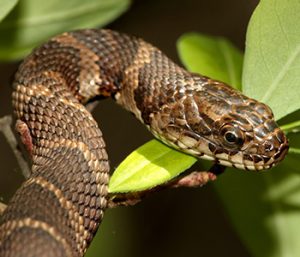Snakes
Biology
The majority of snakes found in the United States are nonvenomous. There are over 3,500 species of snakes, of these 600 are venomous. Snakes are cold blooded reptiles and can thrive in forested land, tropical locations, and in water. Snakes rely on their sense of smell to track their prey.
They are essential to our ecosystem. Some species of snakes are endangered and need protected from extinction. Many people are scared by them, and there presence near structures and populated areas is unwelcome.
Snakes in Your Area
- Garter Snake
- Copperhead
- Cottonmouth/Water Moccasin
- Eastern Rat Snake
- Rubber Boa
- Scarlet Snake
- Sidewinder
- Timber Rattlesnake
- Trans-Pecos Rat Snake
- Western Terrestrial Garter Snake
- Western Worm Snake
Reproduction
Some species lay eggs and others have live births. The number of offspring will also vary by species.
Habits
Snakes eat many small animals such as frogs, salamanders, insects, worms, rodents, and birds, with larger ones often feeding on larger prey. They, can kill their prey in a variety of ways. Venomous snakes have sharp, hollow fangs, for piercing skin and injecting venom. These fangs are located in the upper jaw and are connected to venom glands. Nonvenomous snakes, use constriction to capture and restrain their prey. They bite their intended prey and quickly wrap themselves around it, the prey is then consumed whole. They Posses the ability to open their mouths to surprising sizes which allows them to consume prey larger than their mouth would typically allow.
Cold blooded in nature, snakes will often be seen laying in a sunny area, warming themselves. During cold months snakes will hibernate often along with several other snakes to maximize body warmth.

